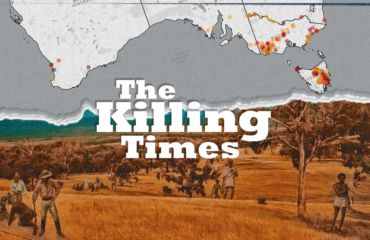‘All my life there’s been this expectation that I know a lot about Australian football because of my great uncle, Roy Cazaly.
Being related to a famous footballer meant that even before I really knew anything about the game it was sort of expected that I would know.
When people assume you are an insider it forces you to wonder what it’s like for people who are outsiders.

I had developed an interest in the game as a spectator but was always interested in the importance football plays in building relationships between different groups in the national community.
That’s what led me to think about migrant players and fans, people who might be outside of that system.
I always jokingly say I went and did a PhD on this because everybody assumed I was an expert on football, so I figured I’d better become one.
I wanted to learn why it was that they took up the sport and what their experience of it was like at an elite level.
My research was conducted through long-form interviews with 25 players from migrant backgrounds whose involvement in the game spread across various eras in football, spanning from the 1950s to today.
Migrant-background players mostly got involved in the game at a young age through school and through schoolmates, as football was a way that children who came from different backgrounds could bond with their friends in the schoolyard.
For a lot of them developing an interest in the game wasn’t a conscious choice but something they did during their early years in order to fit in and hang out with their mates.
The Irish-migrant players and their particular experience as outsiders to Australian football was different from other migrants as they hadn’t been brought up playing it in school.
They were scouted overseas and flown here to play the game.
The Melbourne Football Club was the first to trial recruitment camps in Ireland under the watch of then-coach Ron Barassi.
‘The Australian football landscape has since grown and changed for migrant-background players.’
He felt that Gaelic and Australian football had similarities and it could be advantageous to the football club to try and recruit people outside of the regular football system. But after coming to Australia and taking up this new form of football for the first time the field was suddenly just as uncertain as everywhere else.One of the more recent Irish players, Tadhg Kennelly, wrote in his biography, Unfinished Business, that the place he had felt most comfortable in his life was on the field playing Gaelic football.
As racial vilification rules weren’t introduced into the AFL until 1995, many of the players I interviewed were a part of the game at a time when racism was not uncommon and some were subjected to racial taunts on and off the field.

When reacting to this racial abuse the players revealed it was their masculinity being scrutinised as well as their race.
Whether or not the players reacted negatively to abuse was a test of their character and whether they were tough enough to play football.
The Australian football landscape has since grown and changed for migrant-background players.
AFL multicultural programs have tried to encourage participation at a grass roots level by setting up football clinics in particular migrant communities.
Several players have become leaders in this area.
For example, the Richmond Football Club player, Bashar Houli, has worked with the AFL to set up prayer rooms in the major stadiums for Muslim fans and participants in the league.
When it comes to racism there can be a desire in football to celebrate the positives without talking about the negatives.
We are an incredibly diverse and welcoming game now but it remains important to talk about the past when the sport was less diverse and less welcoming.
A key objective of the AFL is to be open and welcoming and the league can benefit by learning from those past migrant players and their experience of being outsiders.
Perhaps then we could begin to have a broader discussion on diversity to ensure that the next group of players from different backgrounds don’t have to go through the same things.
Research in this area is significant because Australia is a migrant country and will continue to be so.
The Australian Bureau of Statistics show that around 20 per cent of the Australian population was born overseas and another 20 per cent have at least one parent who was born overseas.
This means that almost half of the population has a very immediate experience of migration.
While my PhD focussed on migrant-background players and their experience entering football as outsiders, other research is looking at migrant experiences in art, in writing, in culture. I feel that mine is just a tiny little piece of a much bigger story. ’
Ciannon Cazaly’s thesis is titled: “Playing the Game: the experiences of migrant-background players in Australian Rules Football.”
*My PhD is an irregular series in which The Citizen speaks with recent Melbourne University PhD graduates.



